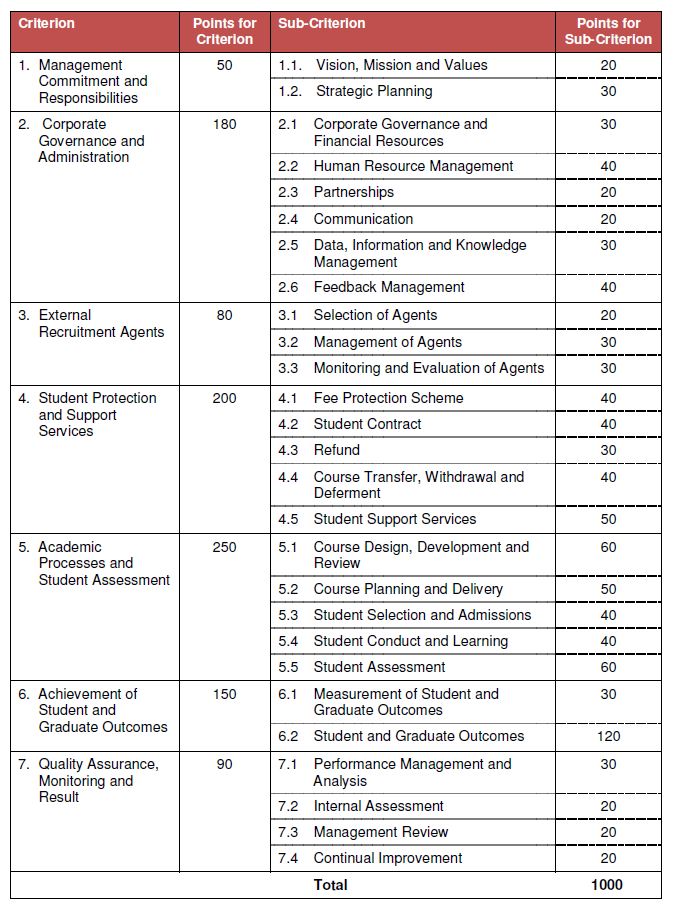E-Newsletter on GDv4
We will be sending out an e-newsletter twice a month to inform and update recipients, in bite-size portions, on the changes to the Edutrust Guidance Document – the new GDv4 compared to the old GDv3. Sample below.
To be in the mailing list to receive this e-newsletter please click here.
GDv4 E-newsletter – Sample
Comparing GDv3 and GDv4 : An Overview
GDv4 GDv3


Some Observations
- A cursory glance seems to suggest that there are less sub-criteria in GDv4 than in GDv3. For example: there were 3 sub-criteria in C3 External Recruitment Agents in GDv3, while there are 2 sub-criteria in C3 External Recruitment Agents in GDv4. Are there really less requirements to be met? A close examination of GDv4 text will confirm that the assumption of lesser requirements is incorrect – in reality there has been a stream-lining but no reduction.
- GDv3 gave the points for each main criterion as well as a break-down for each sub-criterion. GDv4 states only the points for each main criteria and does not give a break-down by sub-criteria.
- The two categories with most points in GDv3 were C5 Academic Processes and Student Assessment (250 points) and C6 Achievement of Student and Graduate Outcomes (150 points). These total 400 points out of a maximum of 1000. In GDv4 C7 Performance Outcomes carry 330 points (just under one-third of the total of 1000 points). Outcomes has been extended beyond Student and Graduate Outcomes to include 3 other aspects (Service Quality; Operational; and People Development). The next 2 categories in GDv4 (C4 Student Protection and Support Services and C5 Academic Systems and Processes) carry 200 points each.
Some Practical Implications
- With one-third of the points given to C7 Performance Outcomes, PEIs need to pay attention to identifying the performance outcomes pertinent to the four aspects.
- PEIs should also note the requirement to track and measure performance against comparative targets or appropriate benchmarks in the four aspects.